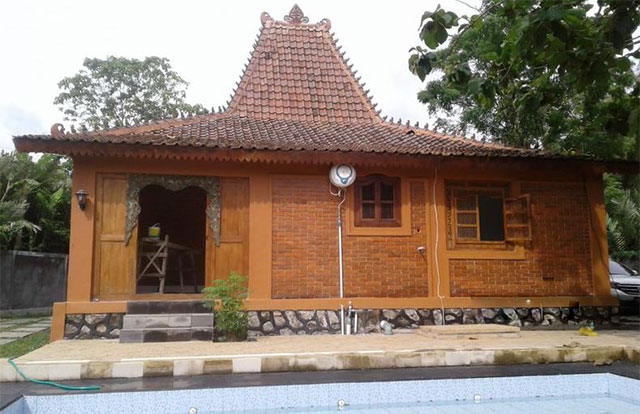East Java Traditional House – East Java is the largest area when compared to other provinces on the island of Java. The province with its capital city of Surabaya is the second largest city in Indonesia after Jakarta.
If we talk about East Java, of course it cannot be separated from its famous cultural arts. Among the well-known regional cultures of East Java are Ludruk, Reog Ponorogo, and the song “Rek Ayo Rek” which is very impressed in the hearts of the people. As a nation rich in regional culture and arts, East Java also has several arts that are contained in its traditional houses.
In this post, love inshallah.com will invite us to glance at some of the traditional houses of East Java with their unique characteristics and arts. Here we will see a traditional East Java house complete with an explanation.
East Java Traditional House
Traditional Joglo House
The Joglo house is designed in such a way with its distinctive roof shape. The large roof at a glance looks like a traditional Central Java house. It is not meaningless, this roof is made like a large, towering mountain, as a symbol of majesty and splendor, besides that the roof of this traditional house also symbolizes something high and sacred, they call it the name of the roof of this house as tajug.
In the past, owning a joglo house was not just ordinary people, only those in high positions could own a joglo house to receive many guests. Also shows the high social status of a person.
There is a characteristic of the Joglo house, the wood used is teak, besides that the roof of the house is in the shape of a square five high up like a mountain.
Also read: Ethical Politics, Perversion and Criticism and Examples of Ethical Politics
A house is said to be a joglo house because it consists of several parts that cannot be separated. Here are the parts of the joglo house that you should know.
1. Pendopo
The pendopo is part of a traditional joglo house with an open design. This means that this space can be at one with nature as it is. The benefits and functions of the joglo are as a place to receive guests, carry out traditional ceremonies or for art performances and other entertainment.
2. Pringgitan
Pringgitan is a part of the East Javanese traditional house called Joglo. This is a link between the pavilion and the inside of the house. Pringgit which separates the pavilion and the inner room is usually used and functions as a wayang performance place.
3. Omah Njero
There is also a part of the house called Omah Njero. This is part of the core of the house, this is where families usually get together and relax together.
4. Senthong
The Senthong is the most important part of the house, namely the room or room to rest or sleep the home owner. Senthong itself is divided into three parts, namely Senthong Tengen, Senthong Kiwo and Senthong Tengah.
Senthong Tengen is on the right side and is used as a children’s room, senthong kiwo is on the left and functions as the bedroom of the head of the family. While Central Senthong is a very important and sacred room, there is a place to keep jewelry, deer antlers, mirrors and others.
5. Gandhok
This is another part of the house that is elongated and it is an addition to the back of the house. This room is used for storage of foodstuffs and other goods.
Also read: Lightning Protection: Five Important Things to Know
Several Types of Joglo Houses
The traditional house of East Java or Joglo, is divided into several parts depending on the style of the house, such as a house with a very complicated model or using 36 other daan poles.
– Joglo Sinom; This existing house has quite a lot of poles, namely 36 pillars plus 4 pillars. The house that is made carries the concept of a mobile terrace. Each of the high peaks is in a high and tiered design.
– Joglo Pangrawit; Pangrawit has a very intricate style and design. Many pillars and wide terraces and roofs rise, and cut.
– Joglo Hageng; The design of the traditional Joglo Hageng house is also complicated with many pillars, a large yard and a blunt roof with a shorter space.
– Joglo Situbondo; It is called that because the traditional houses of East Java are mostly found in Situbondo and Ponorogo. The manufacture is to use pure teak wood for the basic material. This traditional house looks simple but full of aesthetics.
All materials used in the manufacture of this traditional house are influenced by the values of history or philosophy.
Also see: The Australian Continent: Characteristics, Climate, Landscape and Population
